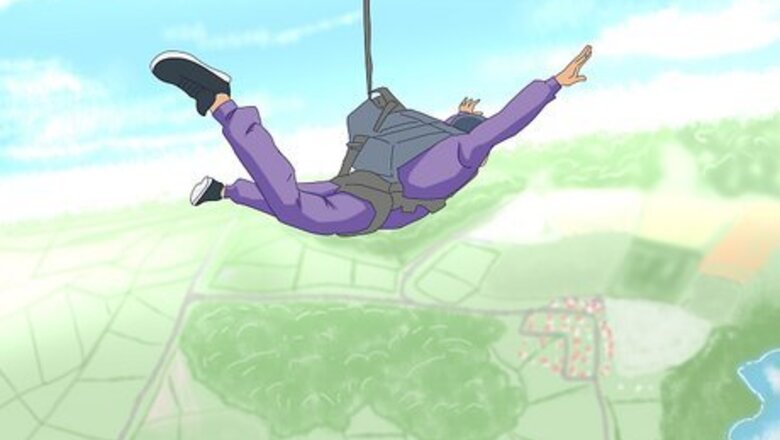
views
Using Your Reserve Parachute
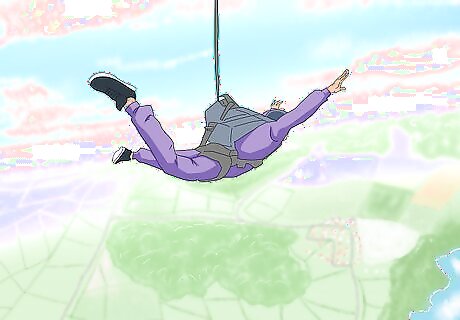
Get in the breakaway position. If your main parachute is malfunctioning or has become tangled, it's important that you can break away from it before deploying your reserve or else the reserve parachute may become tangled. To get in the breakaway position, spread your legs to reduce your velocity and keep your head up with your back arched. Being in the wrong position could get you entangled in your main chute. You must break away at a minimum of 1,600 feet to allow you enough time to fully deploy your reserve.
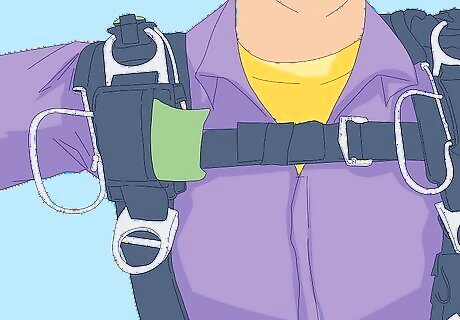
Look and reach for the breakaway handle. Make sure to take the time to look down at the lever that you're pulling. The release is typically found on the right-hand side, but you should talk to your skydiving instructor before you jump. Grab onto the handle with both hands and prepare to pull. The breakaway handle will look like a cloth loop on the strap of your parachute pack.
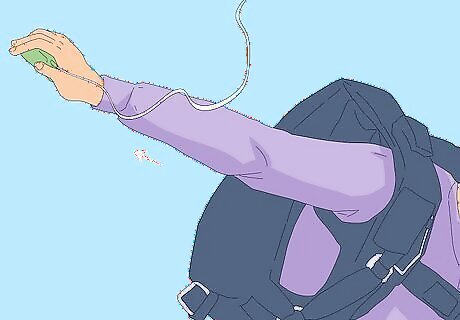
Pull the breakaway handle while looking at your reserve handle. Once you pull the breakaway handle, throw it away. Keep your eyes on the reserve handle. When falling at incredible speeds in a high-stress situation you are more prone to becoming nervous or confused. Keep your concentration on the thing you must do next. The breakaway handle will release your main parachute so that your reserve does not become entangled. You do not have to pull the breakaway handle if your main parachute did not deploy. Just pull your reserve ripcord.
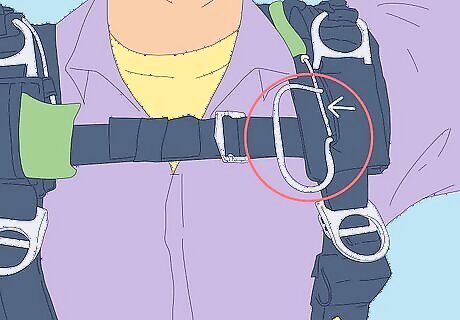
Pull the reserve ripcord. With both hands, pull the reserve ripcord and deploy your secondary chute. The reserve ripcord can usually be found on your left-hand side. The reserve static line lanyard is a system that should automatically deploy your secondary shoot if you detach from your main parachute, but should not be relied on in the case of a malfunction. The reserve will be on the other side of your breakaway handle and will usually be either a red cloth loop or loop made of metal.
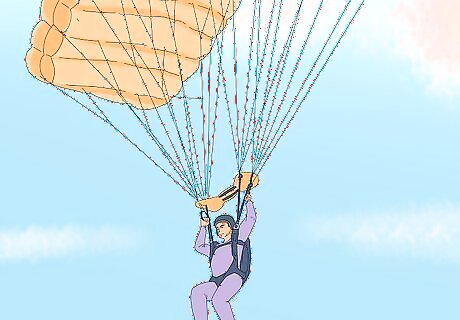
Use your steering cables and get into the landing position. Look up to make sure that your reserve has successfully deployed and prepare to land. You'll have less time to prepare for your landing because you're using your reserve, so execution is crucial. To assume the landing position, point your feet to the ground with your heels up, and try to absorb the shock from landing with your legs. Use the steering cables to your left and right to guide you. Find a suitable place to land, like an empty field. Avoid cliffs or other dangerous objects like power lines. To move to the left, simply pull the left cable. To move to the right, pull the right cable.
Reacting When Your Reserve Chute Malfunctions
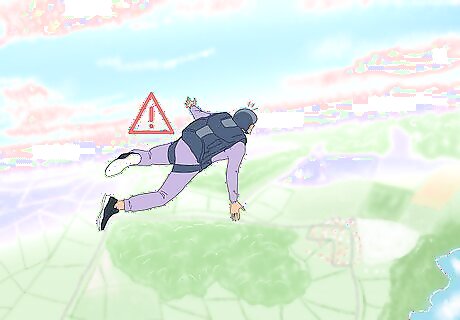
Don't panic. If your main parachute malfunctions or fails to open and your reserve chute also doesn't work, it's natural to think the worst and prepare for death. However, it's imperative that you keep your wits about you so that you can plan how and where you fall to increase your chance of survival. Concentrate each incremental step that you'll have to take in order to increase your chances of survival. Regulate your breathing and clear your mind as you're falling. Inhale deeply through your nose and out of your mouth.
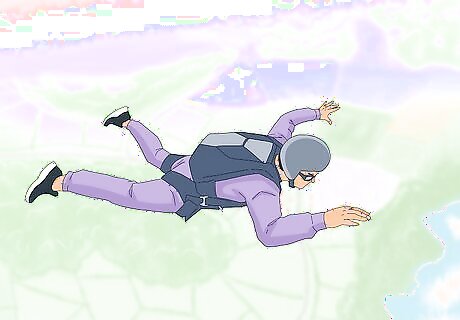
Spread out your body in an X. Emulate the skydiver pose and try to get as flat as possible horizontally so that you can reduce your speed. The front of your body should be facing the ground and your arms should be raised above your head so that you achieve the most drag that you can in your situation. Arch your head and back upward.

Aim for marshy, wooded, or snowy areas. Tree branches or snow can help absorb your impact and slow your descent before you make contact with the hard ground. Avoid hard objects like concrete, buildings, or flat fields. Aim for hilly areas as the decline can help absorb some of the impact as you fall. Steer left or right by lowering your elbow and leaning into the direction that you want to turn. To move backward, bend your knees and push your arms forward. To move forward, straighten your legs and put your arms to your sides.
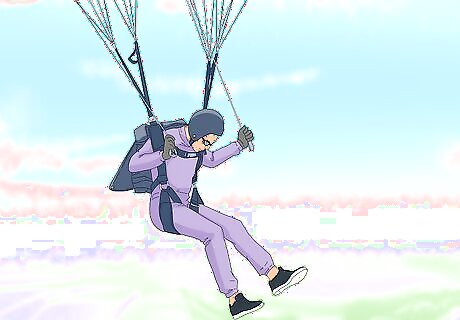
Get into the skydiver's landing stance. As you approach the ground, you want to adjust yourself, so you land on your feet. Put your feet together with your heels up and pointed towards the ground. Flex both your knees and hips and prepare for an intense impact.
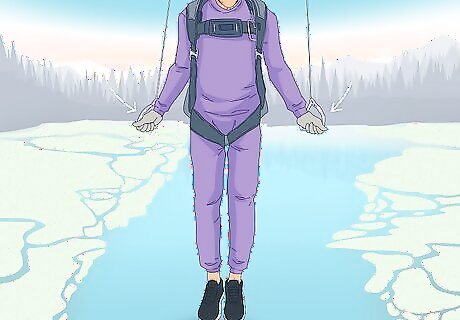
Put your hands to your sides if you must land in a body of water. If you are freefalling over a body of water and can't aim towards a marshy or wooded area, you must tighten your body and fall feet first. Fall straight with your hands to your sides and your feet close together.
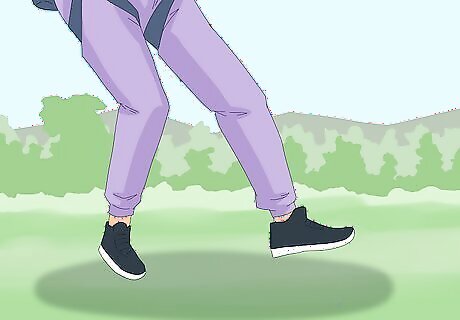
Land on your feet. Make contact to the ground in the skydiver's landing stance, with your feet pointed towards the ground and your heels up. Landing on your feet can help your legs can absorb some of the impact from the fall. While you may injure your legs or hips, landing on your feet may prevent other vital organs from being damaged as well.
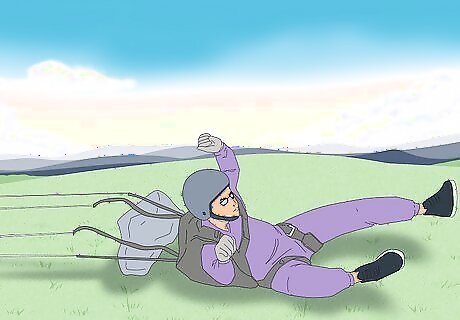
Protect your head and roll if you can. Hitting your head or spinal cord could result in a life-threatening injury. Hitting the ground with your feet and rolling forward as if you were doing a somersault may help you absorb some of the impact. Protect the top and back of your head by using your hands and arms to cover your neck. Bend your neck forward and tuck in your chin to help protect the back of your head.


















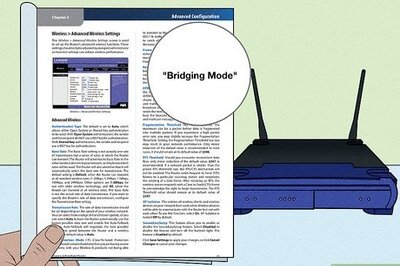

Comments
0 comment